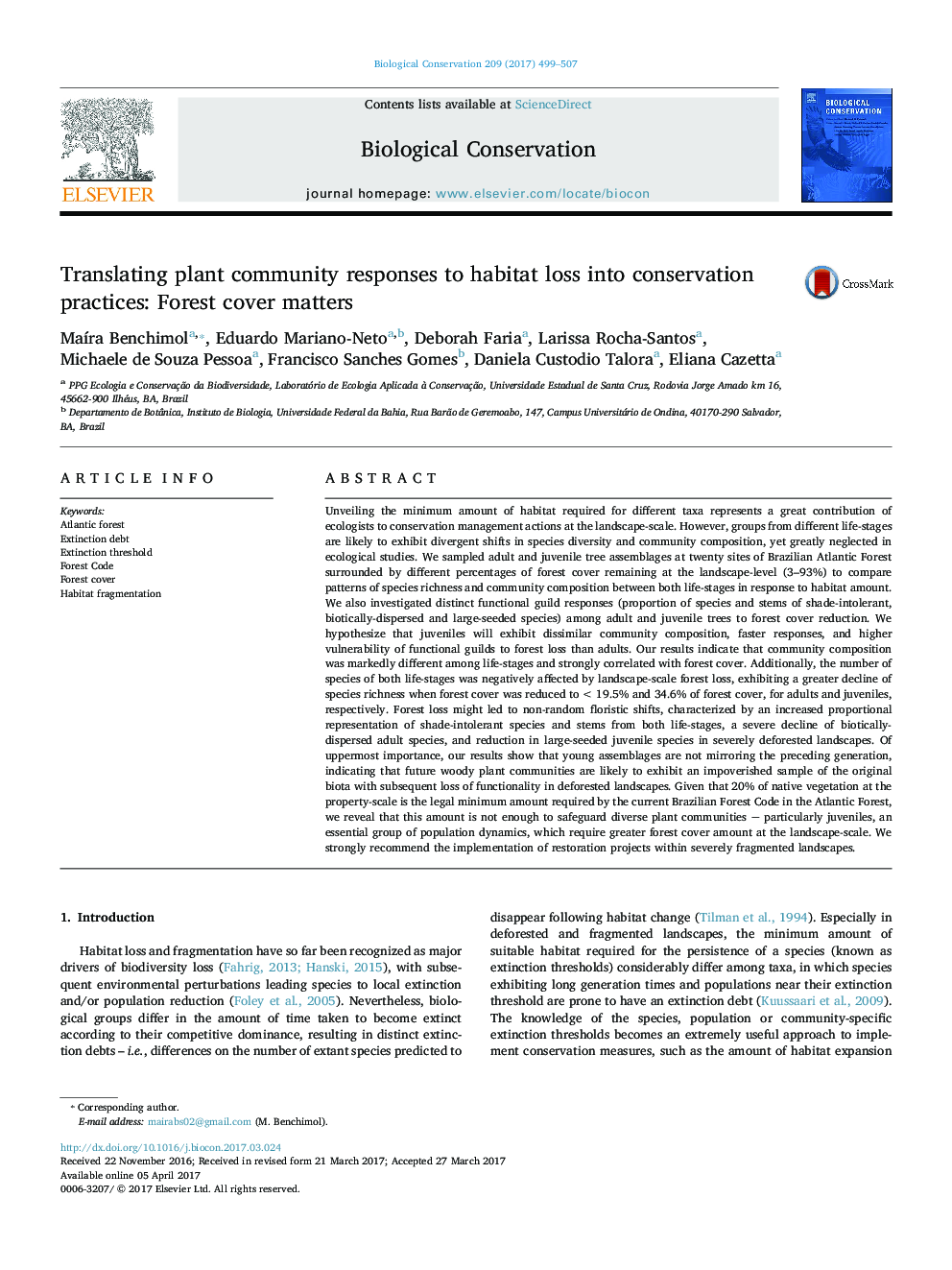| کد مقاله | کد نشریه | سال انتشار | مقاله انگلیسی | نسخه تمام متن |
|---|---|---|---|---|
| 5743353 | 1617893 | 2017 | 9 صفحه PDF | دانلود رایگان |
Unveiling the minimum amount of habitat required for different taxa represents a great contribution of ecologists to conservation management actions at the landscape-scale. However, groups from different life-stages are likely to exhibit divergent shifts in species diversity and community composition, yet greatly neglected in ecological studies. We sampled adult and juvenile tree assemblages at twenty sites of Brazilian Atlantic Forest surrounded by different percentages of forest cover remaining at the landscape-level (3-93%) to compare patterns of species richness and community composition between both life-stages in response to habitat amount. We also investigated distinct functional guild responses (proportion of species and stems of shade-intolerant, biotically-dispersed and large-seeded species) among adult and juvenile trees to forest cover reduction. We hypothesize that juveniles will exhibit dissimilar community composition, faster responses, and higher vulnerability of functional guilds to forest loss than adults. Our results indicate that community composition was markedly different among life-stages and strongly correlated with forest cover. Additionally, the number of species of both life-stages was negatively affected by landscape-scale forest loss, exhibiting a greater decline of species richness when forest cover was reduced to <Â 19.5% and 34.6% of forest cover, for adults and juveniles, respectively. Forest loss might led to non-random floristic shifts, characterized by an increased proportional representation of shade-intolerant species and stems from both life-stages, a severe decline of biotically-dispersed adult species, and reduction in large-seeded juvenile species in severely deforested landscapes. Of uppermost importance, our results show that young assemblages are not mirroring the preceding generation, indicating that future woody plant communities are likely to exhibit an impoverished sample of the original biota with subsequent loss of functionality in deforested landscapes. Given that 20% of native vegetation at the property-scale is the legal minimum amount required by the current Brazilian Forest Code in the Atlantic Forest, we reveal that this amount is not enough to safeguard diverse plant communities particularly juveniles, an essential group of population dynamics, which require greater forest cover amount at the landscape-scale. We strongly recommend the implementation of restoration projects within severely fragmented landscapes.
Journal: Biological Conservation - Volume 209, May 2017, Pages 499-507
